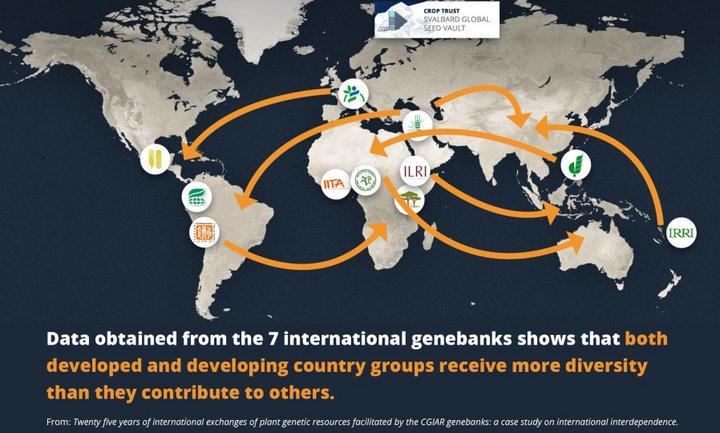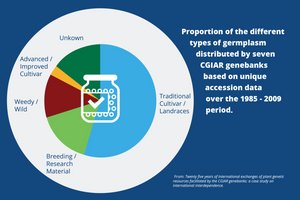Blog Twenty five years of international exchanges of plant genetic resources

A blog from the Crop Trust features Bioversity International scientists who analyzed 25 years of plant genetic resources exchanges facilitated by seven CGIAR genebanks. The results show how no country is self-sufficient.
A blog from the Global Crop Diversity Trust features Bioversity International scientists who analyzed 25 years of plant genetic resources exchanges facilitated by seven CGIAR genebanks. The results show how no country is self-sufficient in plant genetic resources.
In 25 years, seven CGIAR genebanks have distributed almost 1 million samples of 1,470 different plant species to 191 countries.
These impressive data are just some of the results of Twenty five years of international exchanges of plant genetic resources facilitated by the CGIAR genebanks: a case study on international interdependence, a discussion paper by Bioversity International scientists Gea Galluzzi, Michael Halewood, Isabel Lopez Noriega and Ronnie Vernooy.
The paper - developed in the context of the CGIAR Research Program on Climate Change, Agriculture and Food Security - analyzes data concerning international movements of plant genetic resources for food and agriculture facilitated by the genebanks hosted by seven CGIAR centres from 1985-2009. Data show that no country is self-sufficient in plant genetic resources; each one depends on the genetic diversity found in crops in other countries and regions.

The Global Crop Diversity Trust Senior Scientist, Luigi Guarino, spoke with two of the authors of the study, Michael Halewood and Gea Galluzzi, to find out more about the paper. The result of this conversation have been included in a Crop Trust recent blog post, which also shows with brilliant illustrations some of the paper’s most important findings.
Read the blog
Download the paper
Image: Even diversity-rich countries, where centres of origin are found, are not self-sufficient in germplasm and require significant amounts from the international genebanks. Credit: The Global Crop Diversity Trust
Image on top: Global germplasm distribution from 1985-2009. More than half of the material was made up of landraces and traditional cultivars. Credit: The Global Crop Diversity Trust
